Abstract
An on-line computer method is described for the isolation of single motor unit potentials, evoked by stimulation of the anterior tibial nerve at the ankle, from the compound action potential recorded from surface electrodes over the extensor digitorum brevis muscle. The latencies, durations, amplitudes, and areas of the potentials were measured in a group of control subjects and patients with myasthenia gravis. In myasthenic patients there is a significant reduction in the durations of motor unit potentials and a significant increase in latencies while their amplitudes and areas remain unchanged. The results are consistent with the presence of a `terminal neuropathy' in myasthenia gravis.
Full text
PDF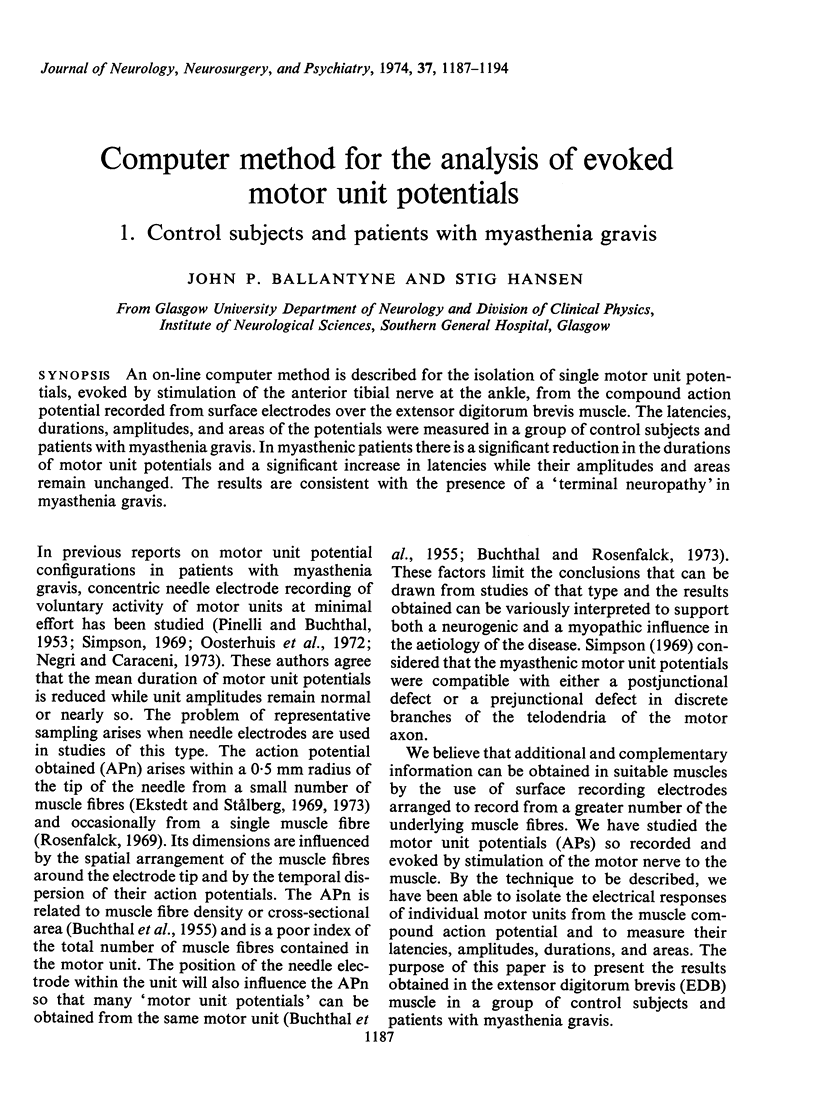
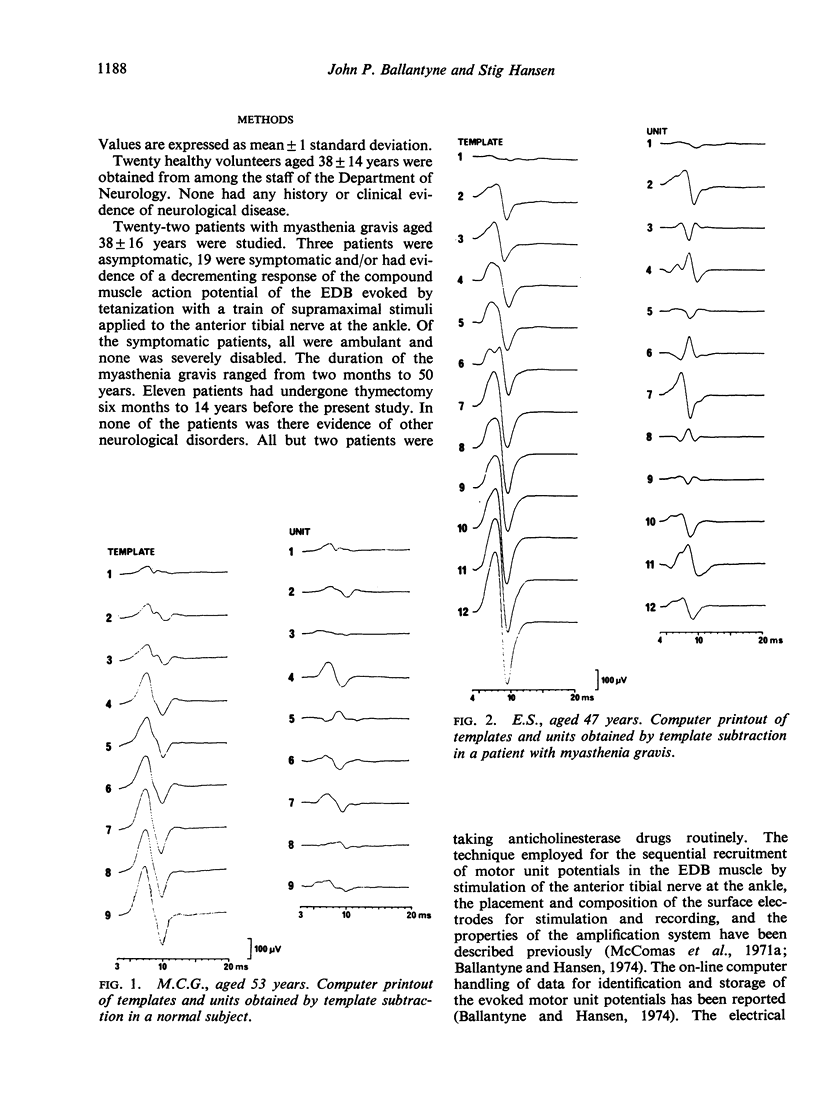
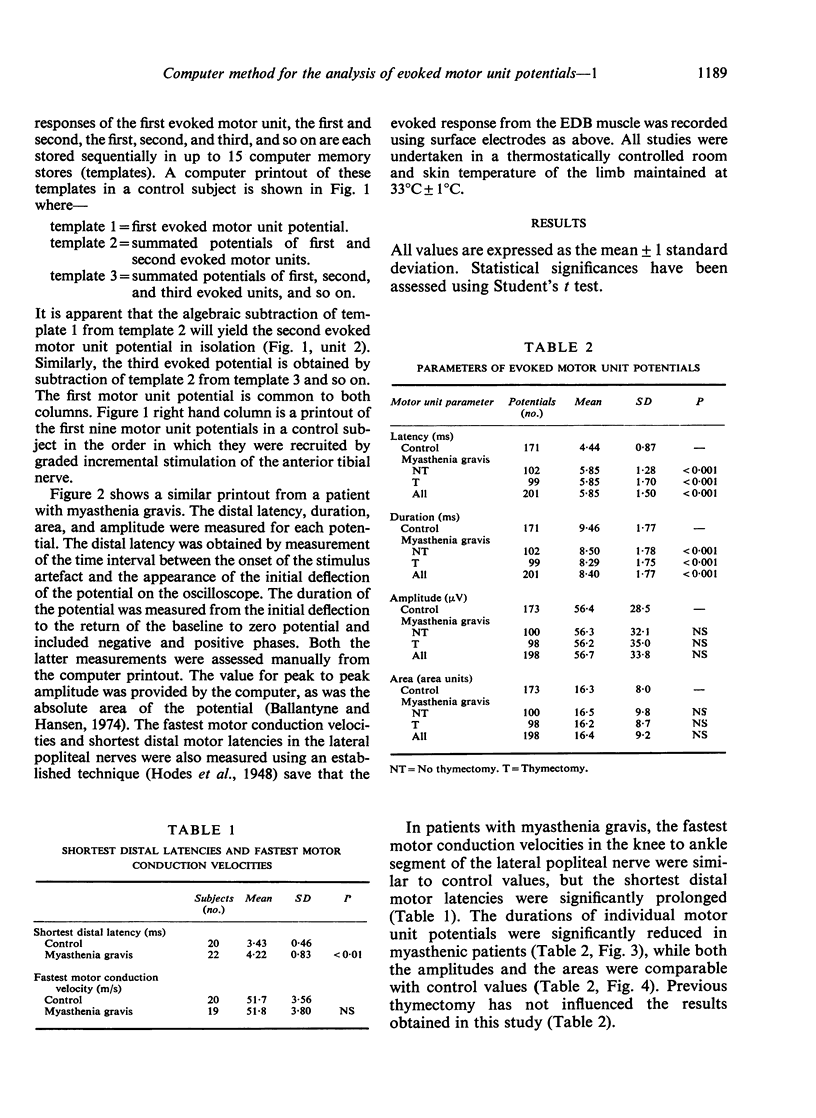
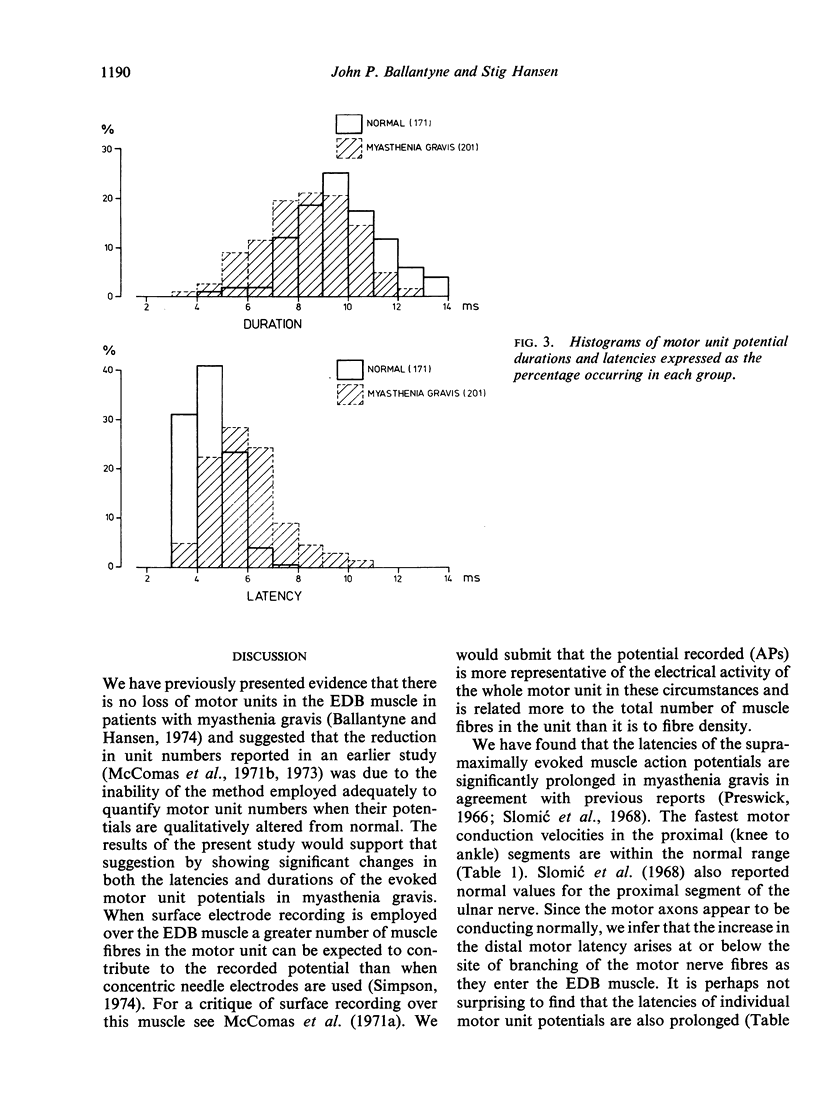
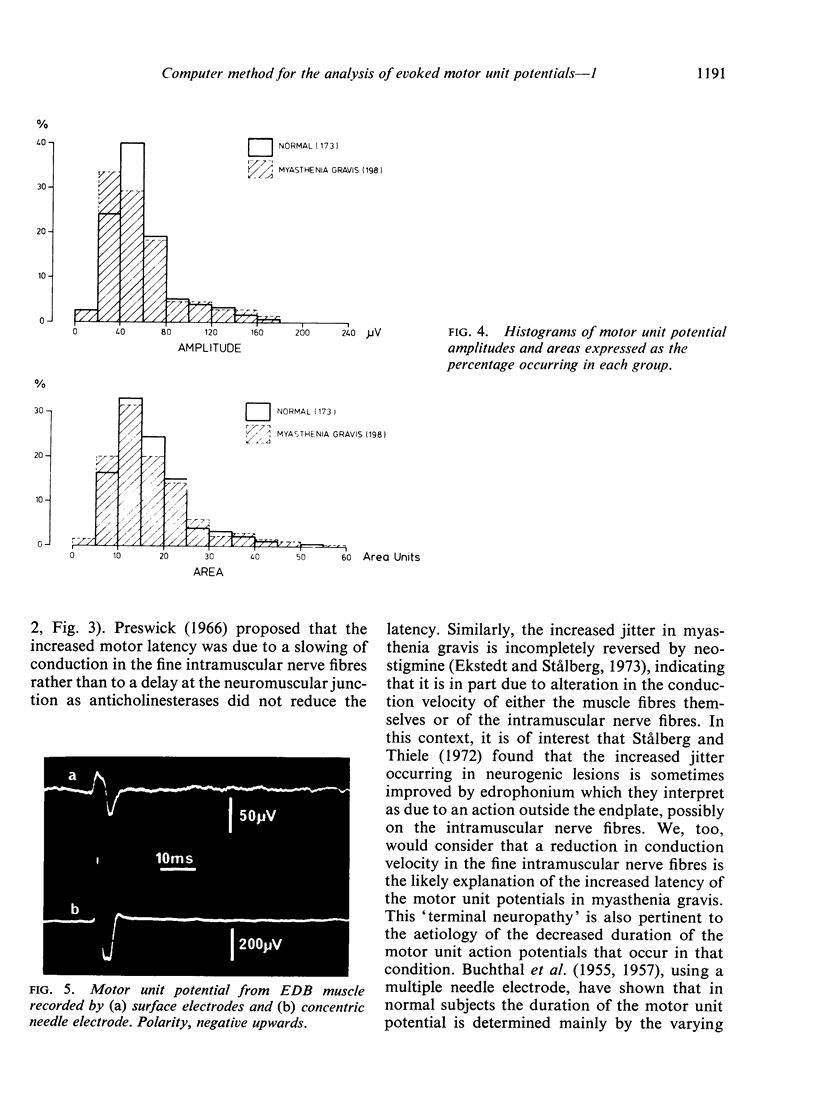
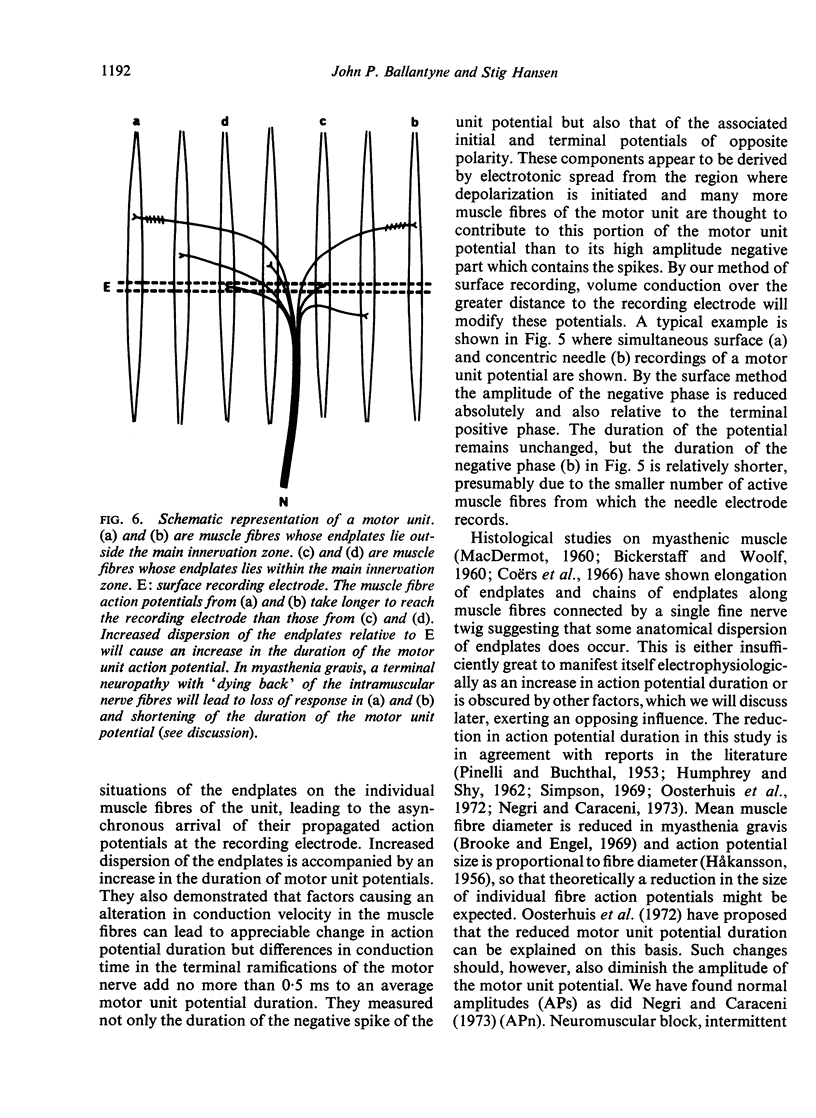
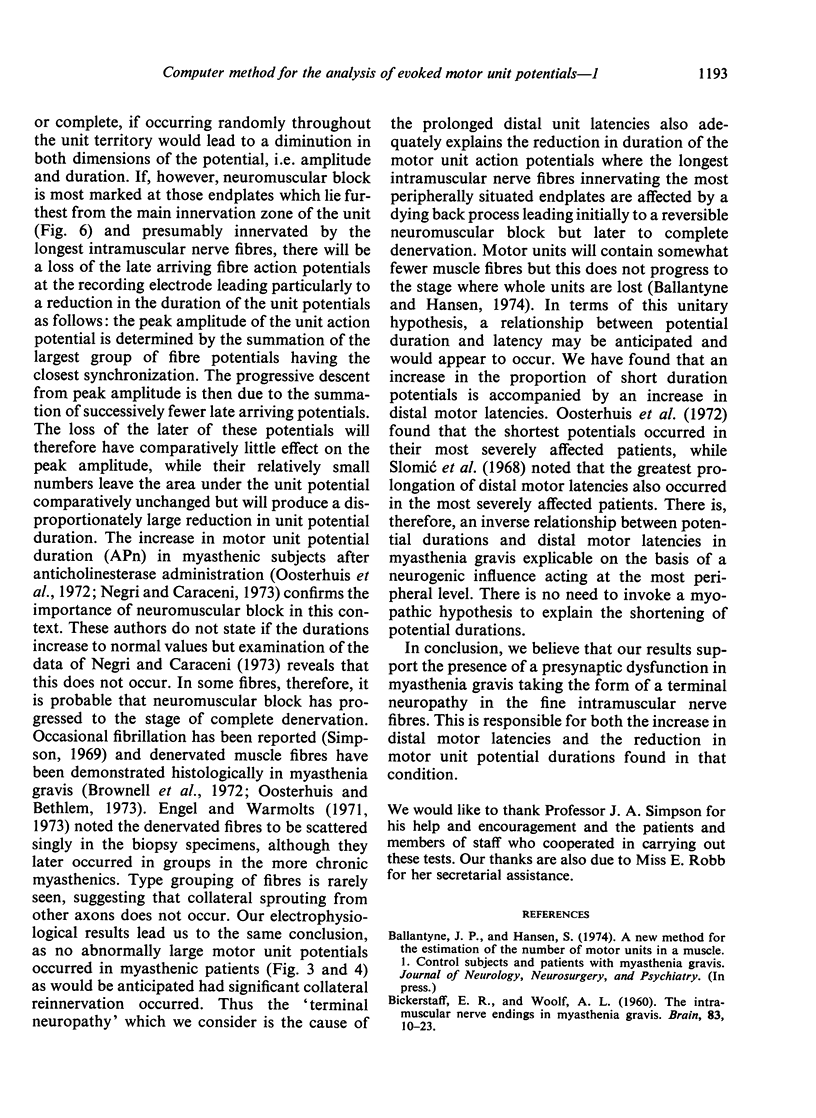
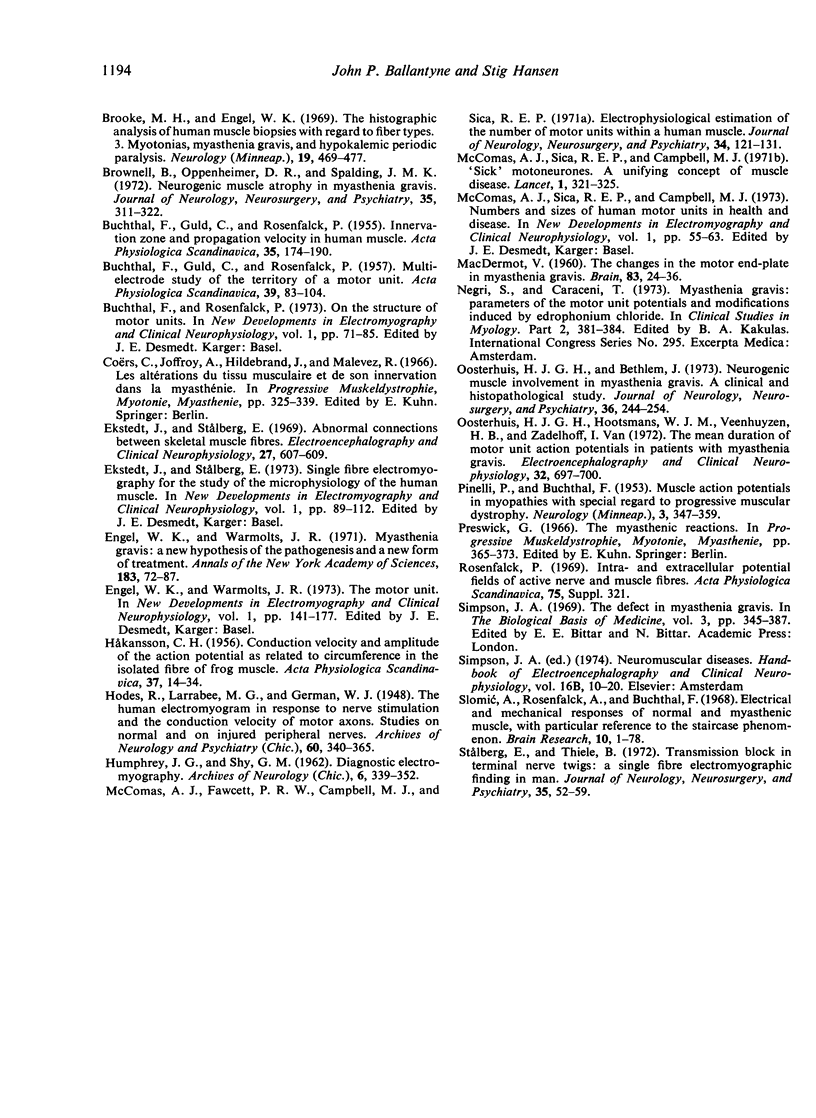
Images in this article
Selected References
These references are in PubMed. This may not be the complete list of references from this article.
- BICKERSTAFF E. R., WOOLF A. L. The intramuscular nerve endings in myasthenia gravis. Brain. 1960 Mar;83:10–23. doi: 10.1093/brain/83.1.10. [DOI] [PubMed] [Google Scholar]
- BUCHTHAL F., GULD C., ROSENFALCK F. Multielectrode study of the territory of a motor unit. Acta Physiol Scand. 1957 Apr 10;39(1):83–104. doi: 10.1111/j.1748-1716.1957.tb01411.x. [DOI] [PubMed] [Google Scholar]
- BUCHTHAL F., GULD C., ROSENFALCK P. Innervation zone and propagation velocity in human muscle. Acta Physiol Scand. 1955 Dec 31;35(2):174–190. doi: 10.1111/j.1748-1716.1955.tb01276.x. [DOI] [PubMed] [Google Scholar]
- Brooke M. H., Engel W. K. The histographic analysis of human muscle biopsies with regard to fiber types. 3. Myotonias, myasthenia gravis, and hypokalemic periodic paralysis. Neurology. 1969 May;19(5):469–477. doi: 10.1212/wnl.19.5.469. [DOI] [PubMed] [Google Scholar]
- Brownell B., Oppenheimer D. R., Spalding J. M. Neurogenic muscle atrophy in myasthenia gravis. J Neurol Neurosurg Psychiatry. 1972 Jun;35(3):311–322. doi: 10.1136/jnnp.35.3.311. [DOI] [PMC free article] [PubMed] [Google Scholar]
- Ekstedt J., Stålberg E. Abnormal connections between skeletal muscle fibers. Electroencephalogr Clin Neurophysiol. 1969 Dec;27(6):607–609. doi: 10.1016/0013-4694(69)90074-1. [DOI] [PubMed] [Google Scholar]
- Engel W. K., Warmolts J. R. Myasthenia gravis: a new hypothesis of the pathogenesis and a new form of treatment. Ann N Y Acad Sci. 1971 Sep 15;183:72–87. doi: 10.1111/j.1749-6632.1971.tb30743.x. [DOI] [PubMed] [Google Scholar]
- HAKANSSON C. H. Conduction velocity and amplitude of the action potential as related to circumference in the isolated fibre of frog muscle. Acta Physiol Scand. 1956 Jul 17;37(1):14–34. doi: 10.1111/j.1748-1716.1956.tb01338.x. [DOI] [PubMed] [Google Scholar]
- HUMPHREY J. G., SHY G. M. Diagnostic electromyography. Clinical and pathological correlation in neuromuscular disorders. Arch Neurol. 1962 May;6:339–352. doi: 10.1001/archneur.1962.00450230001001. [DOI] [PubMed] [Google Scholar]
- MACDERMOT V. The changes in the motor end-plate in myasthenia gravis. Brain. 1960 Mar;83:24–36. doi: 10.1093/brain/83.1.24. [DOI] [PubMed] [Google Scholar]
- McComas A. J., Fawcett P. R., Campbell M. J., Sica R. E. Electrophysiological estimation of the number of motor units within a human muscle. J Neurol Neurosurg Psychiatry. 1971 Apr;34(2):121–131. doi: 10.1136/jnnp.34.2.121. [DOI] [PMC free article] [PubMed] [Google Scholar]
- McComas A. J., Sica R. E., Campbell M. J. "Sick" motoneurones. A unifying concept of muscle disease. Lancet. 1971 Feb 13;1(7694):321–326. doi: 10.1016/s0140-6736(71)91045-2. [DOI] [PubMed] [Google Scholar]
- Oosterhuis H. J., Hootsmans W. J., Veenhuyzen H. B., van Zadelhoff I. The mean duration of motor unit action potentials in patients with myasthenia gravis. Electroencephalogr Clin Neurophysiol. 1972 Jun;32(6):697–700. doi: 10.1016/0013-4694(72)90105-8. [DOI] [PubMed] [Google Scholar]
- Oosterhuis H., Bethlem J. Neurogenic muscle involvement in myasthenia gravis. A clinical and histopathological study. J Neurol Neurosurg Psychiatry. 1973 Apr;36(2):244–254. doi: 10.1136/jnnp.36.2.244. [DOI] [PMC free article] [PubMed] [Google Scholar]
- PINELLI P., BUCHTHAL F. Muscle action potentials in myopathies with special regard to progressive muscular dystrophy. Neurology. 1953 May;3(5):347–359. doi: 10.1212/wnl.3.5.347. [DOI] [PubMed] [Google Scholar]
- Slomić A., Rosenfalck A., Buchthal F. Electrical and mechanical responses of normal and myasthenic muscle. Brain Res. 1968 Aug 5;10(1):1–78. doi: 10.1016/0006-8993(68)90227-8. [DOI] [PubMed] [Google Scholar]
- Stålberg E., Thiele B. Transmission block in terminal nerve twigs: a single fibre electromyographic finding in man. J Neurol Neurosurg Psychiatry. 1972 Feb;35(1):52–59. doi: 10.1136/jnnp.35.1.52. [DOI] [PMC free article] [PubMed] [Google Scholar]



